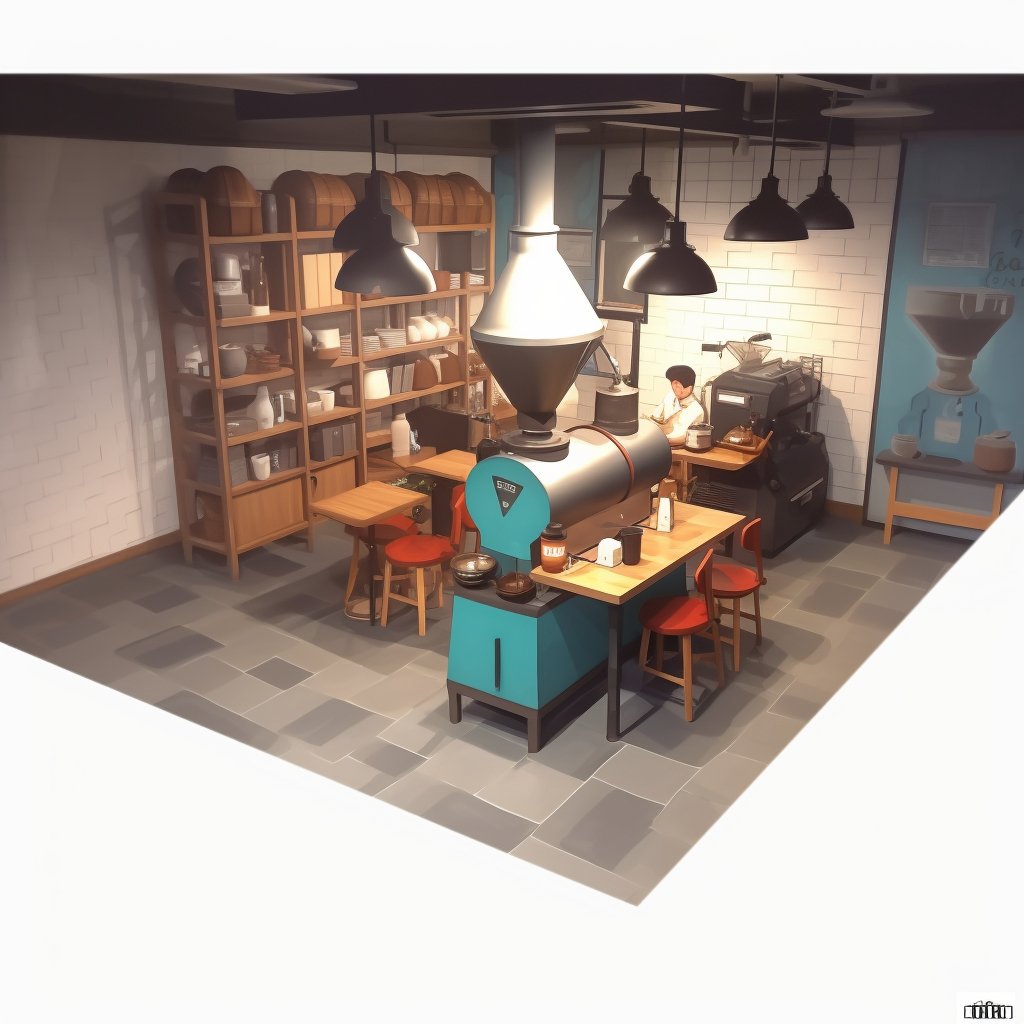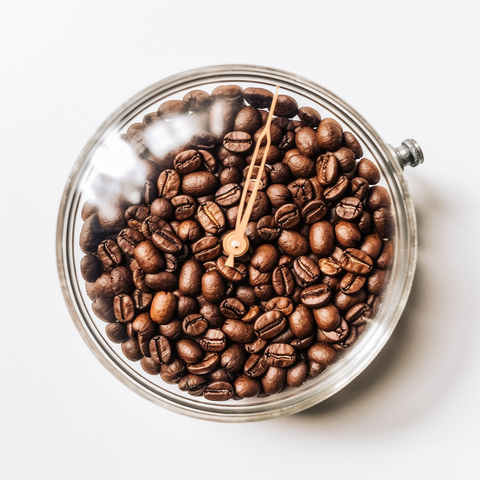
A Taste of Freshness: Why Freshly Roasted Coffee Matters
Share
- Introduction
- The Roasting Process; The role of roasting in developing flavor and aroma
- Freshness and Flavor; The role of Oxidation in Coffee's taste degradation
- Freshness and Aroma; The impact of Time on Aroma and the sensory experience
- Enjoying Coffee at Its Peak; Identifying the peak freshness window for roasted coffee
- Supporting Local Roasters; How local roasters ensure freshness and Quality
- Conclusion

1. Introduction
In recent years, coffee enthusiasts and professionals alike have emphasized the importance of freshly roasted coffee in achieving the ultimate coffee experience (Smith, 2019).
Research has shown that the roasting process plays a critical role in developing a coffee bean's flavor and aroma (Illy & Viani, 2005). As coffee beans age, oxidation affects their flavor profiles, and the aromatic compounds responsible for the sensory experience of coffee decrease over time (Baggenstoss et al., 2008).
To enjoy coffee at its peak, consumers should aim to consume it within the optimal freshness window, typically two to four weeks post-roasting, and follow best practices for storage (Rao, 2014).
Sourcing coffee from local roasters not only ensures freshness but also fosters relationships with experts who are committed to delivering the highest quality beans (Thompson, 2020).
2. The Roasting Process
The role of roasting in developing flavor and aroma

As a professional coffee roaster with a focus on quality control and discipline, I cannot stress enough the significance of the roasting process in delivering an unparalleled coffee experience.
Roasting is a complex process that involves the Maillard reaction and Strecker degradation, which work in tandem to develop the unique flavor and aroma of the coffee beans (Spadone et al., 1990; Franca et al., 2005).
By carefully controlling the temperature and duration of the roast, we can unlock a bean's full potential, creating a myriad of flavors that cheap instant coffee with artificial additives simply cannot replicate (Rao, 2014). To truly appreciate the difference,
3. Freshness and Flavor
The role of Oxidation in Coffee's taste degradation

As an experienced coffee roaster in Gurgaon, I've witnessed firsthand the remarkable impact of freshness on coffee's taste. Consuming freshly roasted beans is crucial for appreciating the complex flavors and nuances that define specialty coffee (Smith, 2019).
The age of roasted coffee greatly affects its flavor profile, with beans losing their distinct characteristics as they grow stale (Baggenstoss et al., 2008). Oxidation is a primary factor in taste degradation, as the exposure to oxygen breaks down the volatile compounds responsible for coffee's unique flavors (van der Pijl et al., 2011).
4. Freshness and Aroma
The impact of Time on Aroma and the sensory experience

As a dedicated coffee roastery, I can attest to the importance of freshness in relation to coffee's aroma. Freshness plays a pivotal role in preserving the aromatic compounds that contribute to the sensory experience of coffee (Avelino et al., 2015).
These volatile compounds are responsible for the enticing scents we associate with quality coffee, and they significantly influence our perception of taste (Poisson et al., 2017). Over time, these aromatic compounds degrade, diminishing the coffee's overall sensory appeal (Gloess et al., 2013).
5. Enjoying Coffee at Its Peak;
Identifying the peak freshness window for roasted coffee
We understand the importance of enjoying coffee at its peak. The peak freshness window for roasted coffee typically spans two to four weeks post-roasting (Rao, 2014). Choosing the right brewing method and grind size can significantly impact the freshness and flavor of your coffee (Hoffmann, 2016).
6. Supporting Local Roasters
How local roasters ensure freshness and Quality

As local coffee roasters ourselves, we firmly believe in the importance of supporting local roasters for a superior coffee experience. Sourcing coffee from local roasters offers numerous benefits, including improved freshness, traceability, and a reduced carbon footprint (Thompson, 2020).
Local roasters like us prioritize quality control and freshness by roasting beans in small batches and maintaining a close relationship with coffee farmers (Colonna-Dashwood & Colonna-Dashwood, 2015).
Conclusion
I recommend following a comprehensive schedule to fully embrace the specialty coffee experience and support local roasters:
Day 1: Visit local roasters to learn about their sourcing, roasting practices, and schedules. Engage in conversations to deepen your understanding of coffee (Smith, 2019).
- Expect to gain insights into the world of specialty coffee and build connections with the roasters.
Day 2: Purchase small batches of freshly roasted beans from local roasters. Begin comparing the aroma and flavor profiles of specialty coffee to instant coffee.
- Expect to notice significant differences in taste, aroma, and overall quality.
Day 3: Invest in a quality coffee grinder and an airtight container. Store your freshly roasted beans properly to maintain their freshness.
- Expect an improvement in the quality and freshness of your coffee.
Day 4: Start grinding your beans just before brewing to release their full aromatic potential. Brew your first cup of coffee using a manual brewing method.
- Expect to experience a noticeable difference in the coffee's taste and aroma.
Day 5-7: Experiment with various brewing methods to discover your personal preferences and the best way to highlight the beans' flavors and aromas.
- Expect to gain a deeper appreciation for the art of brewing and the nuances of coffee flavor.
Day 8 onwards: Gradually shift your coffee consumption habits by consistently purchasing freshly roasted beans from local roasters.
- Expect an elevated coffee experience, with richer flavors and aromas, while supporting local businesses.
Citations:
- Smith, P. (2019). The Coffee Lover's Guide to Freshness. Coffee Review. Retrieved from https://www.coffeereview.com/coffee-lovers-guide-to-freshness/
- Illy, A., & Viani, R. (Eds.). (2005). Espresso coffee: The science of quality. Elsevier.
- Baggenstoss, J., Poisson, L., Kaegi, R., Perren, R., & Escher, F. (2008). Coffee roasting and aroma formation: application of different time-temperature conditions. Journal of Agricultural and Food Chemistry, 56(14), 5836-5846.
- Rao, S. (2014). The Coffee Roaster's Companion. Scott Rao.
- Thompson, J. (2020). How to Buy the Best Coffee Beans. Epicurious. Retrieved from https://www.epicurious.com/expert-advice/how-to-buy-the-best-coffee-beans-article
- Spadone, J. C., Takeoka, G., & Liardon, R. (1990). Analytical investigation of Rio off-flavour in green coffee. Journal of the Science of Food and Agriculture, 53(4), 543-552.
- Franca, A. S., Oliveira, L. S., & Mendonça, J. C. F. (2005). Physical and chemical attributes of defective crude and roasted coffee beans. Food Chemistry, 90(1-2), 89-94.
- van der Pijl, P. C., Gouka, R. J., & Pennings, E. J. M. (2011). The Staling of Roasted Coffee: A Complex Story. Coffee: Emerging Health Effects and Disease Prevention, 171-184.
- Avelino, J., Barboza, B., Araya, J. C., Fonseca, C., Davrieux, F., Guyot, B., & Cilas, C. (2015). Effects of slope exposure, altitude and yield on coffee quality in two altitude-terroirs of Costa Rica, Orosi and Santa María de Dota. Journal of the Science of Food and Agriculture, 95(5), 1019-1029.
- Poisson, L., Blank, I., & Dunkel, A. (2017). Sensomics analysis of key bitter compounds in the hard resin of hops (Humulus lupulus L.) and their contribution to the bitter profile of Pilsner-type beer. Journal of Agricultural and Food Chemistry, 65(12), 2477-2486.
- Gloess, A. N., Schönbächler, B., Klopprogge, B., D'ambrosio, L., Chatelain, K., Bongartz, A., ... & Yeretzian, C. (2013). Comparison of nine common coffee extraction methods: instrumental and sensory analysis. European Food Research and Technology, 236(4), 607-627.
- Hoffmann, J. (2016). The World Atlas of Coffee: From Beans to Brewing - Coffees Explored, Explained and Enjoyed. Octopus Books.
- Colonna-Dashwood, M., & Colonna-Dashwood, L. (2015). The Coffee Dictionary: An A-Z of coffee, from growing & roasting to brewing & tasting. Octopus Books.
